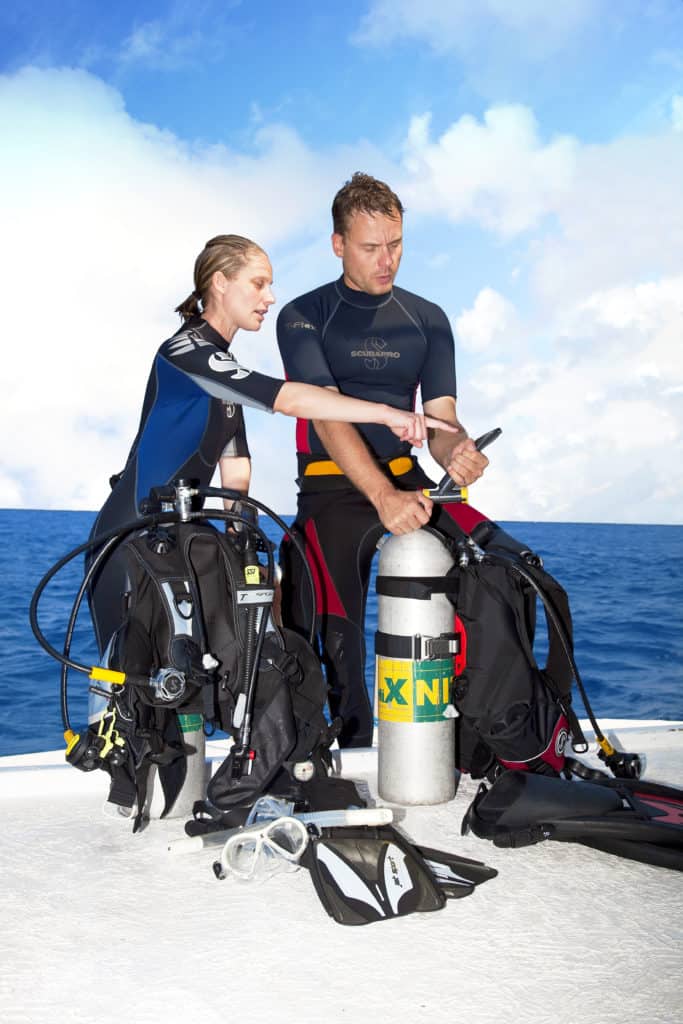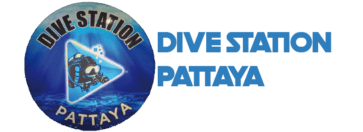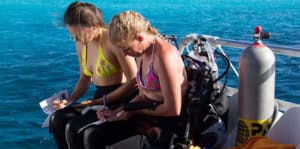When longer bottom times, shorter surface intervals and longer repetitive dive times are just some of the many benefits of diving with nitrox… Why shouldn’t you want to take advantage of the SSI Enriched Air Nitrox Course?
What exactly is Nitrox?
The term ‘Nitrox’ simply refers to any gas mixture composed (excepting trace gases) of nitrogen and oxygen. Surprisingly to most this includes atmospheric air, which is approximately 78% nitrogen, 21% oxygen, and 1% other gases. In scuba diving, we usually only use the term ‘Nitrox’ when actually referring to tanks filled with Enriched Air Nitrox (EANx) which is a gas mixture more than 21% of oxygen and a particular blend of Enriched Air Nitrox is reffered to by the percentage of oxygen in the blend, e.g. EANx32% , EANx36% etc.
What are the benefits?
Longer Bottom Times
The Nitrox we used in recreational diving is between 21 and 40% oxygen. EANx32 and EANx36 being the two most popular mixes of nitrox used across the globe. The increased percentage of oxygen also means a lower percentage of nitrogen than air. A reduced percentage of nitrogen allows divers to extend their no decompression limits (bottom time) by reducing the amount of nitrogen absorbed by the body. Meaning he less nitrogen there is in your tank, the slower your nitrogen absorption will be at any given depth. To illustrate this below is a no decompression time comparison between Air, EANx32 and EANx36 for a dive at 18 metres.
Air (21% Oxygen) – 56 minutes.
EANx32 (32% Oxygen) – 95 minutes.
EANx36 (36% Oxygen) – 125 minutes.
(Disclaimer: The times provided by these tables are for planning purposes and are intended to be used as a guide. Please ensure that you follow your own personal dive computer for your own NDL times.)
As you can see these are huge differences, that can make a huge difference when trying to get that perfect photo or waiting for your favour illusive turtle to make an appearance.
Shorter Surface Intervals
We have just said divers who use nitrox absorb less nitrogen than another diver carrying out the same dive profile/time on air. This also means that the diver using nitrox does not have to ‘off-gas’ as much nitrogen during their surface interval. Therefore, the diver using nitrox is ready to kit up and get back in the water much sooner than the diver on air.
Longer Repetitive Dive Times
The benefits of diving with nitrox are more apparent for divers who are carrying out repetitive dives and especially so on the likes of a liveaboard where divers are commonly carrying out 3+ dives per day over the course of a week or more. On these types of trips, diving with nitrox over air will allow much greater bottom times due to the reduction in nitrogen absorbed.
Reduced Tiredness
Studies have shown that divers who breathe nitrox feel less tired after diving than that of divers who breathe air. This is thought to be linked to the reduction in nitrogen being absorbed when breathing nitrox. Therefore again on a Dive that involves a lot of repetitive dives, such as a liveaboard, it’s worth considering diving some of your dives Nitrox. Even just one dive a day on Nitrox maybe the difference between going to be bed early and being the life and soul of the party.
I think we have clearly shown Why You Should Take the SSI Enriched Air Nitrox Course and why ever diver should have the Nitrox Cert card in their wallet when heading off on dive trip. If you want to learn more about the course give Danny a call in the shop or pop in and see him.




